—————————————————————————————————————
Why it’s cool
Even though the Series 2 dial side is somewhat simplified compared to the original Mosaic 20.01, it is still a remarkable achievement.
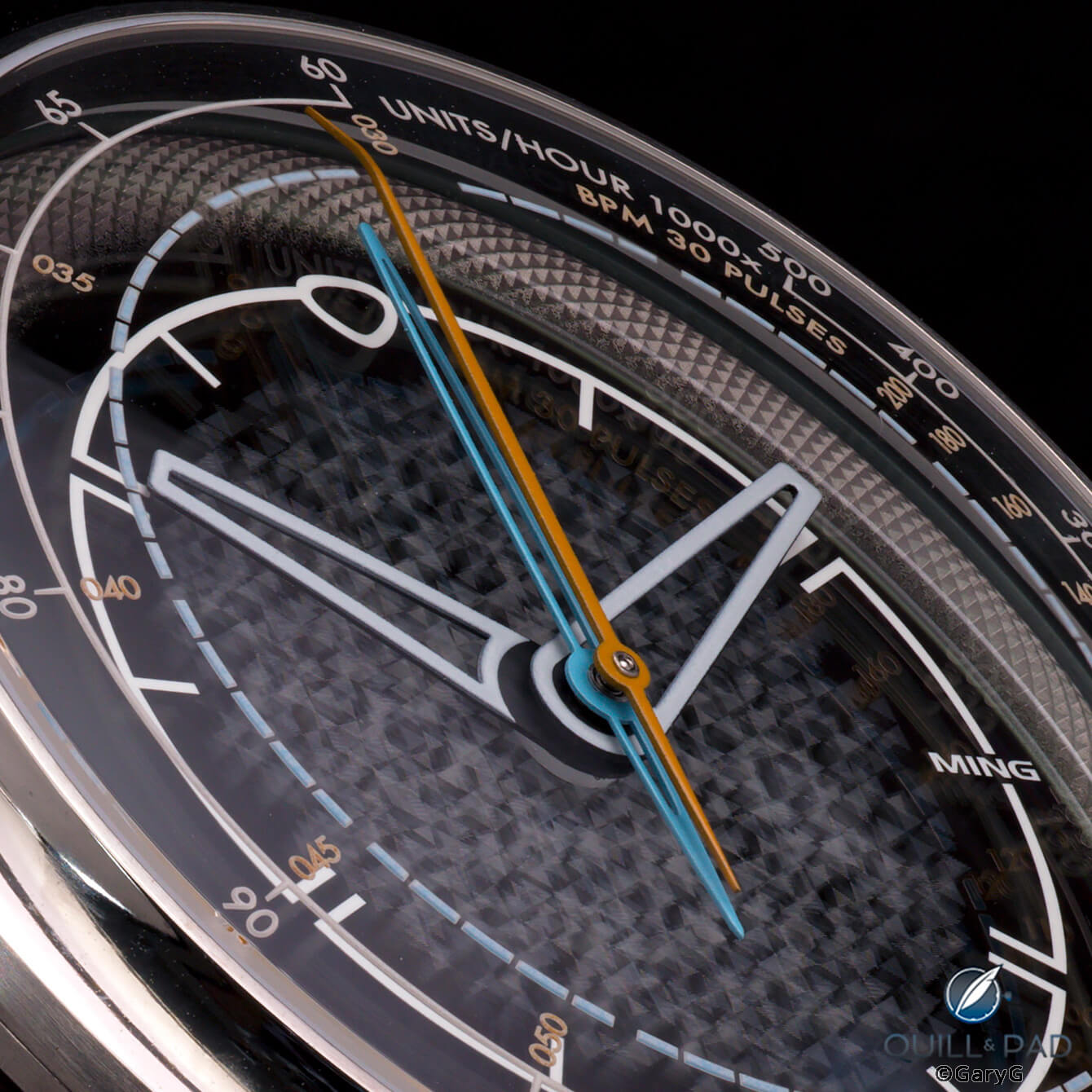
Deep view, Ming model 20.01
If you look closely at the photo above you can see multiple layers. The base is a titanium plate with a modified Clous de Paris finish; above this is a layer of sapphire with a gradient finish, revealing the Clous-de-Paris and then gradually fading to black behind the index markings; Above this is a 1.1mm thick layer of sapphire with the three-tiered mosaic of etched triangles and the hour ring.
Above this, the chronograph, pulsometer and tachymeter scales float on the underside of the crystal. And while you’re looking, notice the curve of the orange chrono seconds hand!
The direct view also conveys an impressive sense of depth, with the multi-layered triangular mosaic providing visual accents.
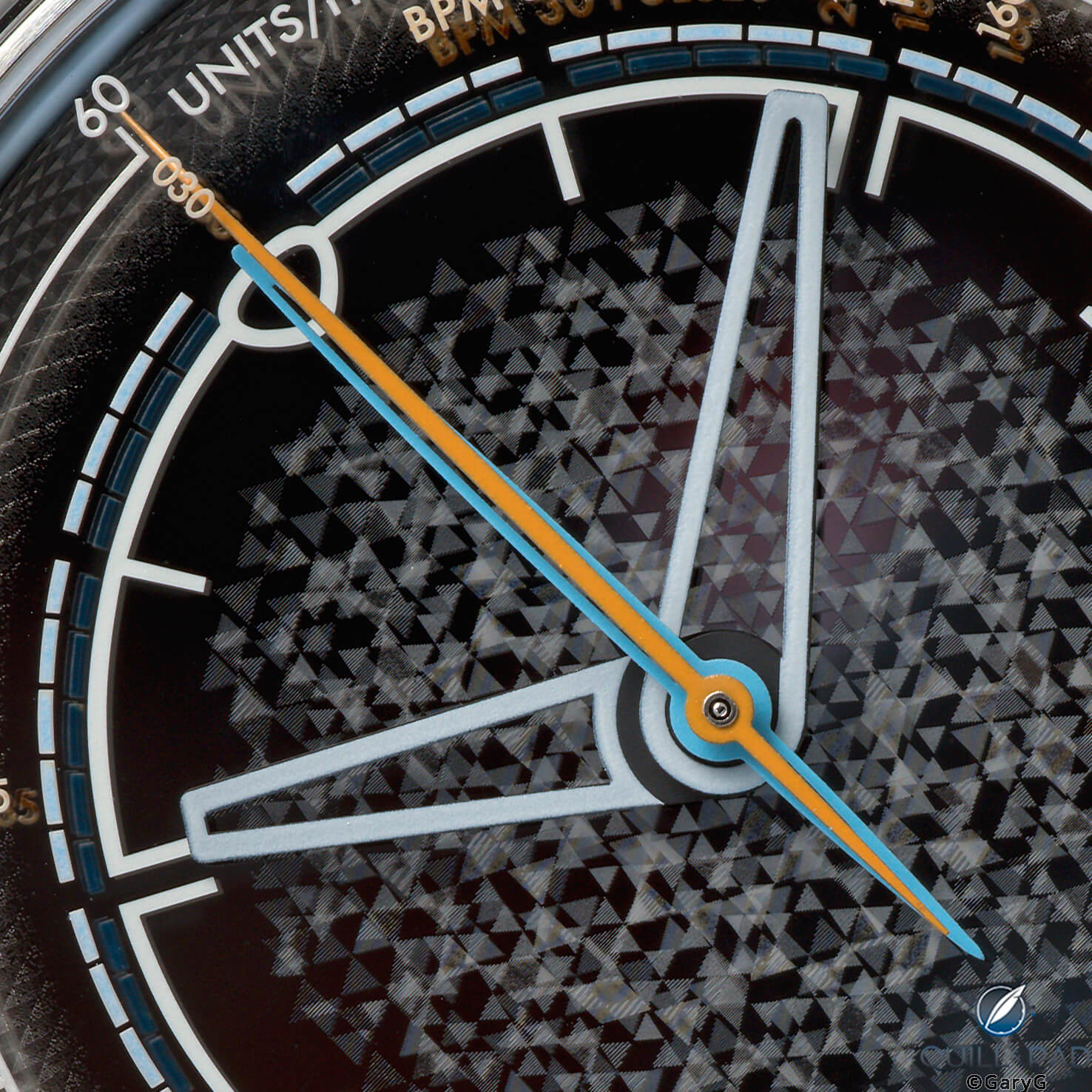
Dial detail, Ming model 20.01 series 2
However, as with pretty much all Ming watches, the fun only begins when you look at the watch in direct light. When viewed from different angles and with different incident light, the multiple layers produce an appearance that ranges from vivid, high-contrast black to smoky to reflective, as in the photo below.
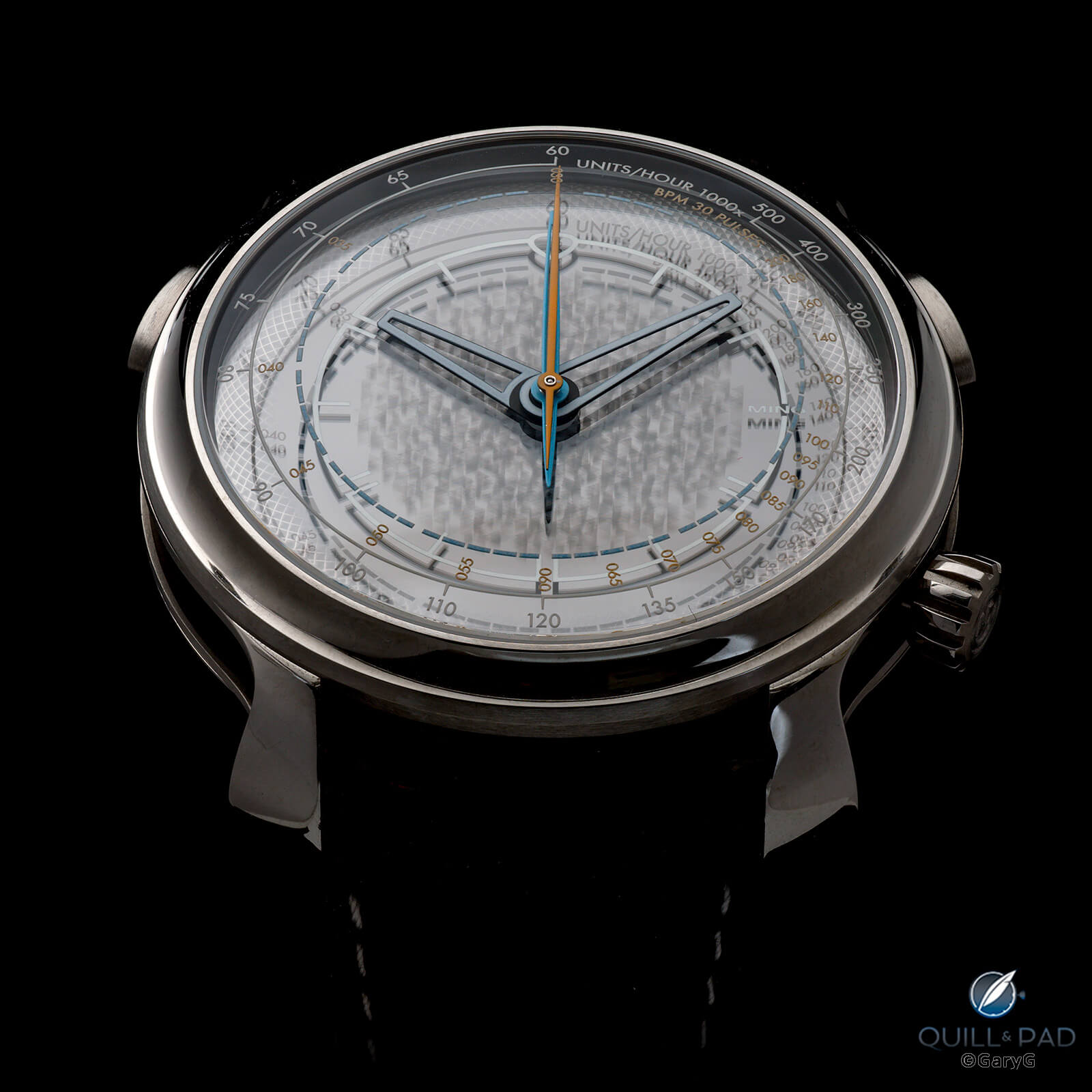
Gets interesting: Ming Model 20.01 in flat reflected light
One of the first exercises Thein had me do as a student was to photograph a single clock using multiple light positions – an exercise I highly recommend to anyone learning to photograph clocks.
For fun, I repeated the experiment with the 20.01: same clock, same camera position, with a single flash in two different positions.
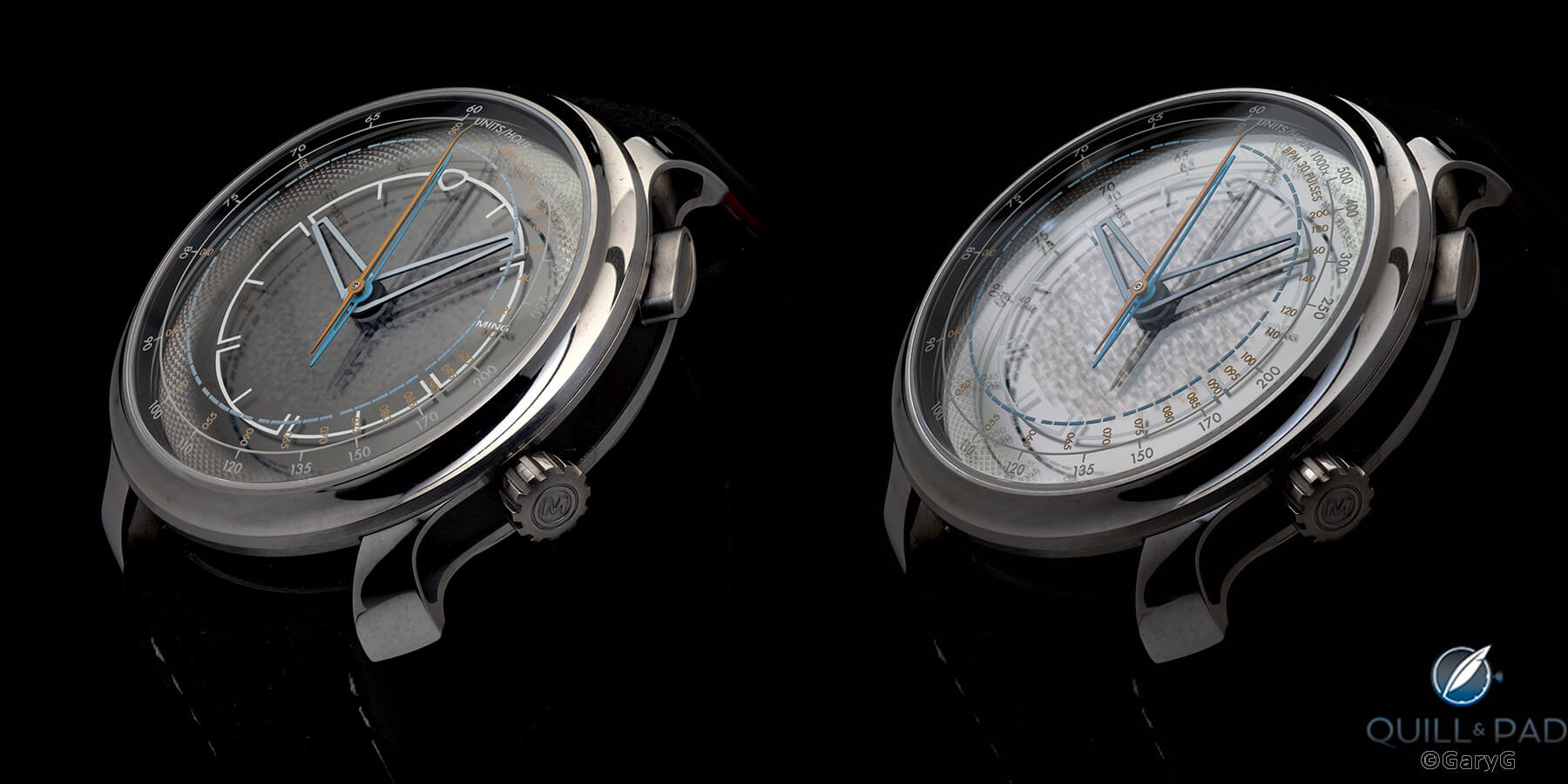
Light experiment: Model 20.01 Series 2 in varied light
And then, just because I could, I took a third photo from a different setup, flipped it horizontally, and added it to the left end to get a triad of perspectives.
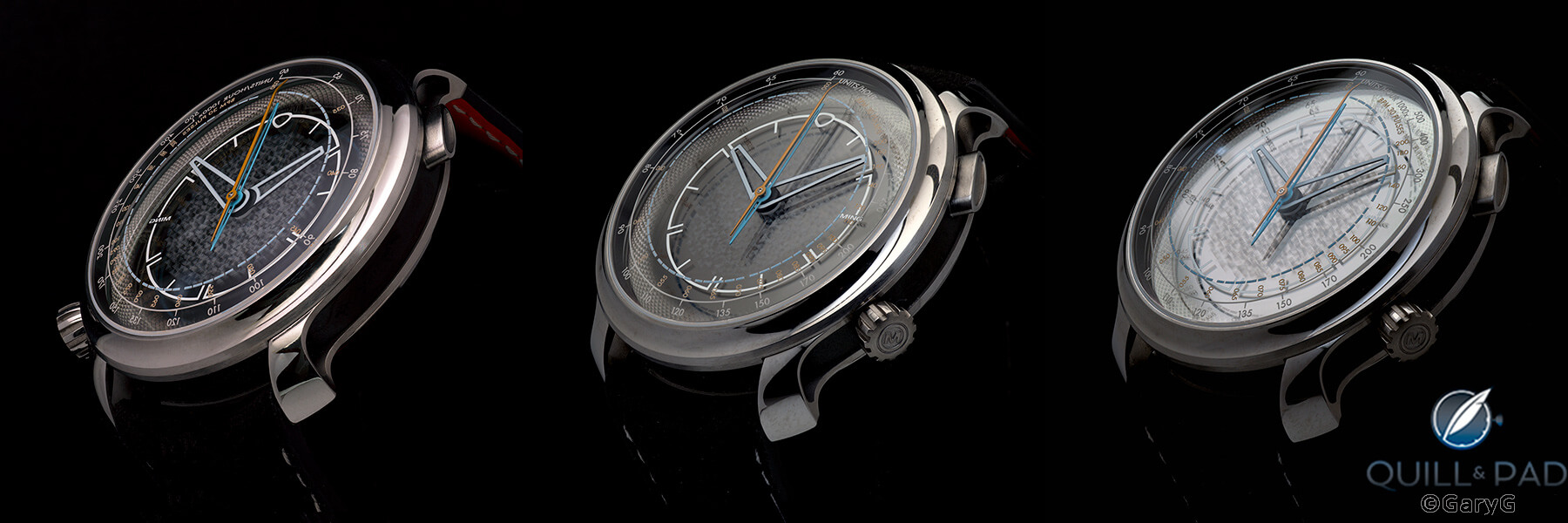
One watch, three views: Ming model 20.01
—————————————————————————————————————



